How to care for a Christmas tree – our guide to maintaining the freshest centerpiece this festive season
Show your Christmas tree some proper care and attention, and it will reward you by staying healthy and fresh throughout the holidays
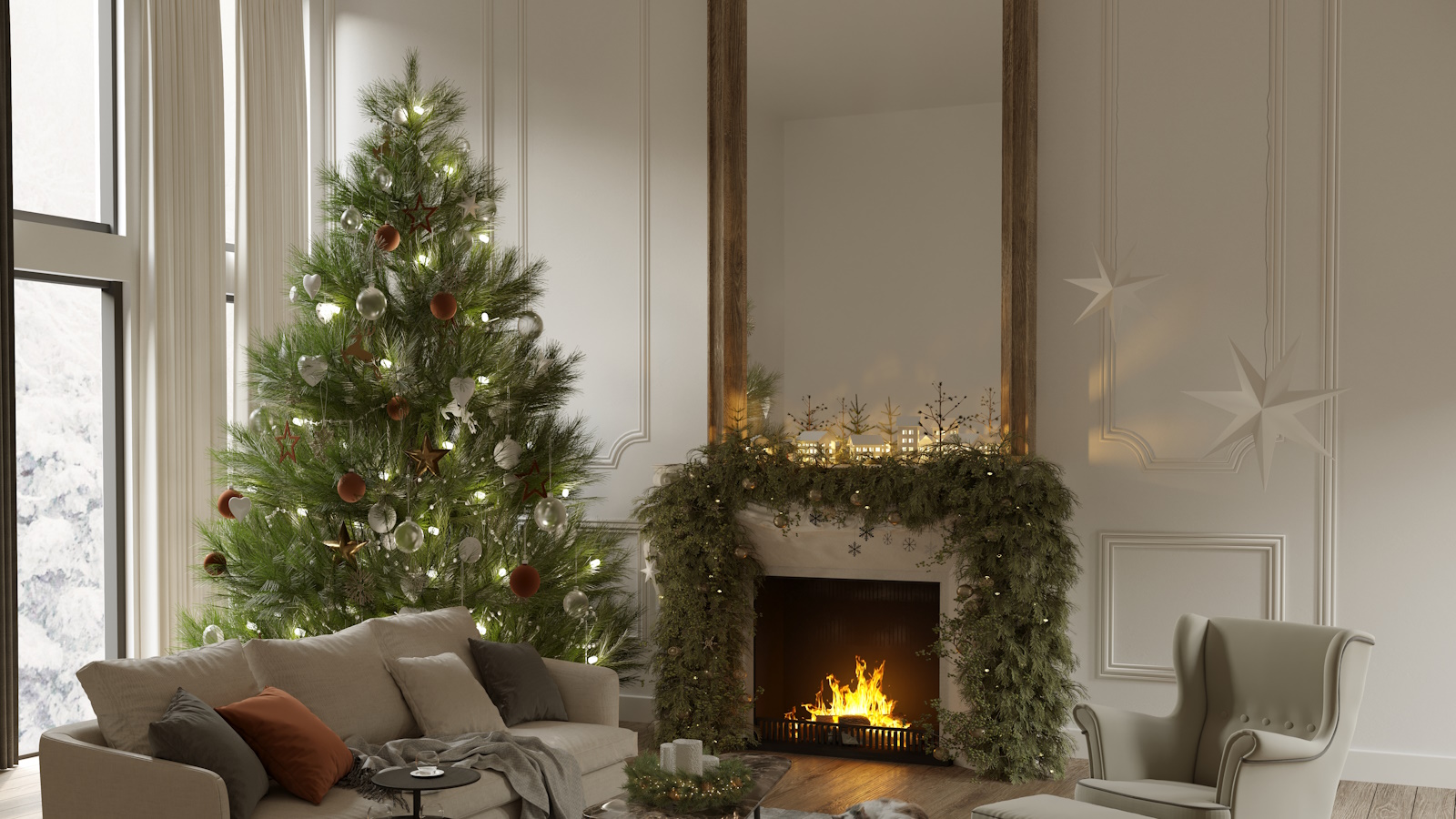

A house isn't a home at Christmas without the ultimate centerpiece - a Christmas tree.
Whether your favorite moment is carefully choosing the perfect fir tree, decorating it in its finest baubles, or simply watching the twinkling lights as you sip mulled wine, a Christmas tree is at the heart of so many of our festive traditions.
From selecting the best Christmas tree variety for you and bringing it home, to understanding how to care for a Christmas tree throughout the holiday season, our guide is here to help you maintain your festive focal point, and keep it looking beautifully fresh until early into the new year.
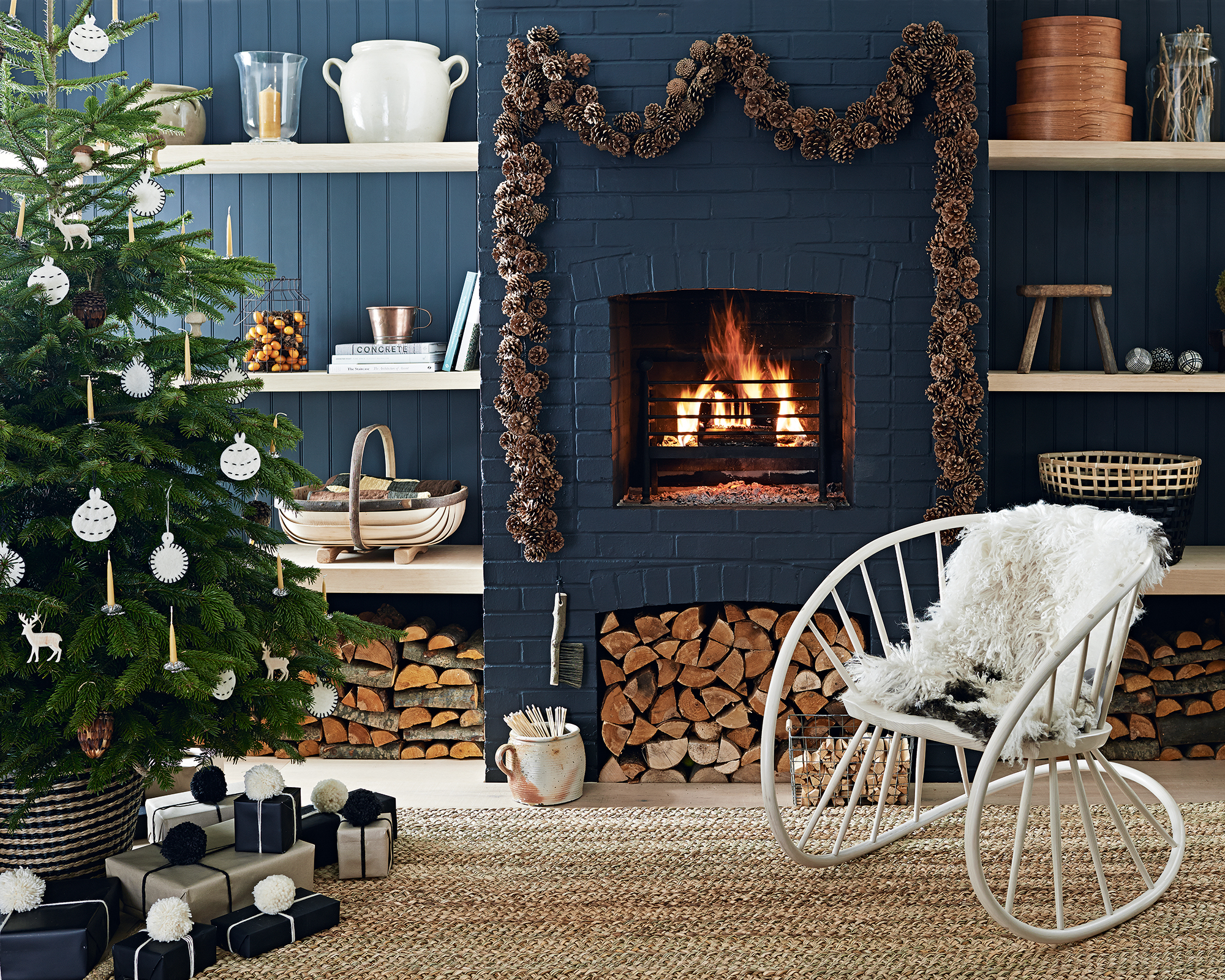
Photography/Adrian Briscoe
7 steps to caring for your Christmas tree
Follow these care tips to ensure your tree remains healthy and as fresh as possible for the entire holiday season.
How do I choose the right Christmas tree?
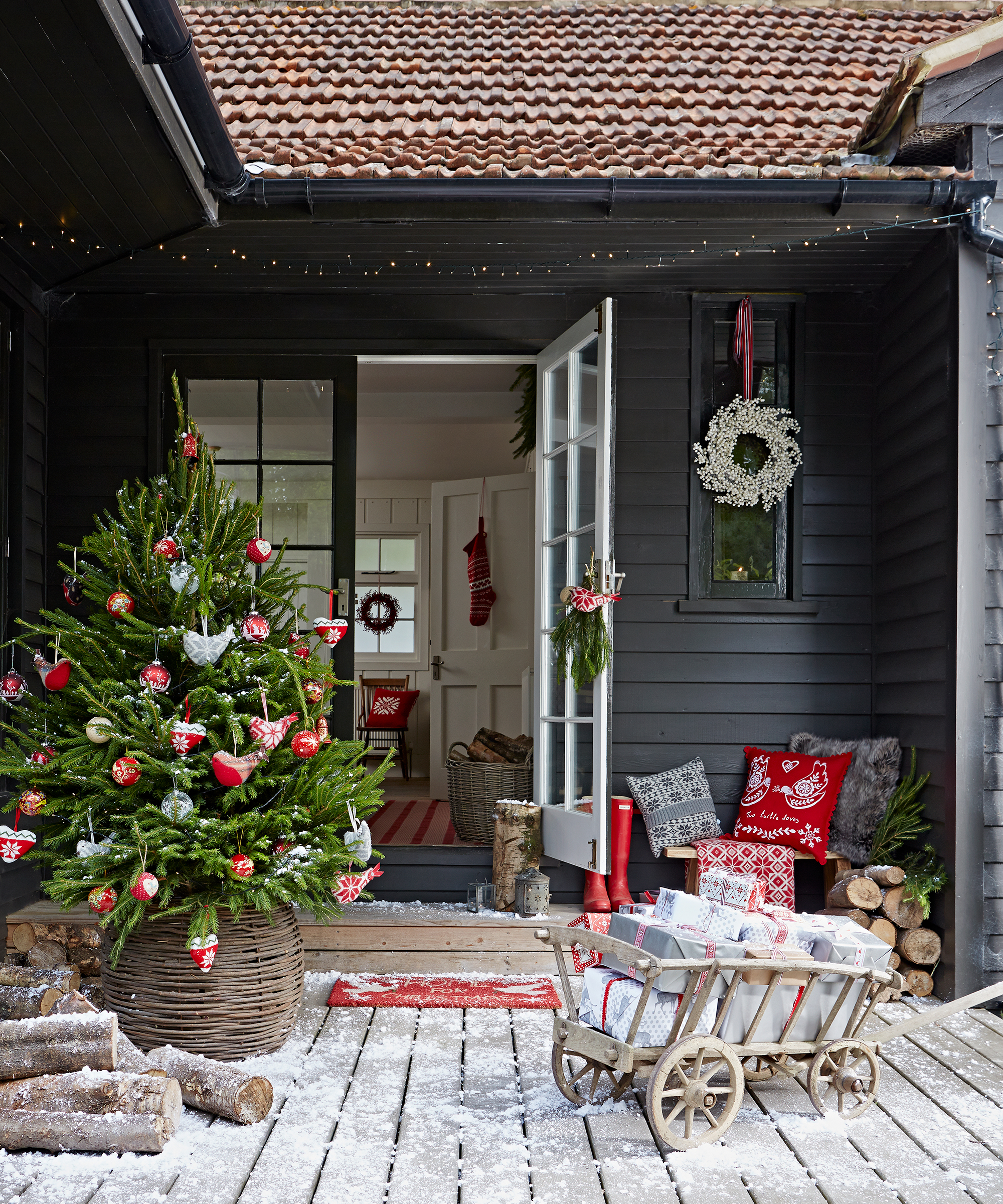
Photography/Jon Day
No matter how chilly a day it might be, don't grab the first Christmas tree you see. Instead make sure you choose a quality, healthy option to take home.
Healthy trees will have a shiny, glossy green coating on the needles which feels slightly waxy to touch. You should also look for strong branches and a good needle retention when choosing a Christmas tree.
You can conduct a simple needle retention test before you make your final selection. Simply take the tree by the trunk (you may need to wear gloves to make this easier) and give it a gentle tap on the ground. If any more than a few pine needles fall, then move on to another, healthier specimen.
You might be more interested in buying a smaller pot-grown tree, which have soared in popularity in the last few years, especially among apartment dwellers, as well as with those wanting multiple Christmas trees in their home. Table top Christmas trees such as Dwarf Alberta Spruces, available to buy at Nature Hills, are a perfect example of this.
As well as in areas like children's rooms and landings, pot grown is a great option for a tree at the front door or porch - a string or two of outdoor-safe fairy lights creates a welcoming festive scene.
These trees are also an especially eco-friendly choice, too, given it can planted outside afterwards. When choosing a pot-grown tree, look for shiny, robust growth and a lovely thickness to the branches.
How do you bring a Christmas tree home?
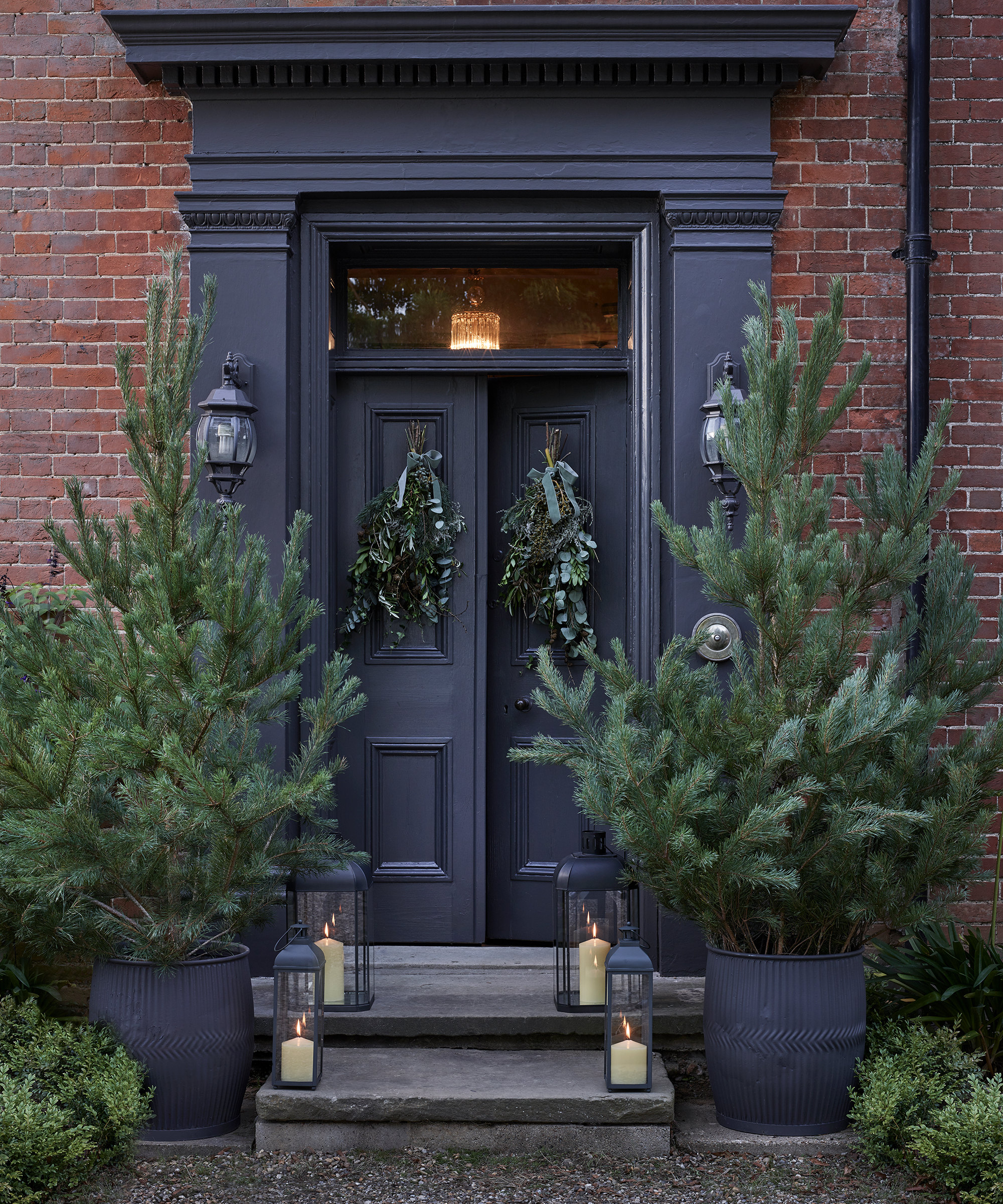
Photography/Chris Everard
First things first when you're bringing a Christmas tree home - make sure the interior of your car is clear so you'll be able to fit it in. Whether you're planning on putting the tree on the roof or inside, make sure you know in advance how much space you will have so that you choose the right size of tree.
If the garden center, farm or market has netting available, always select this option as it helps to protect the tree for the journey. If the tree is going inside, old blankets or a dust sheet will help protect the interior, but can also be useful on the roof to save your paint from any scratches from the trunk. If using the roof, make sure to fasten securely with rope or cable ties.
What should I do once I get my tree home?
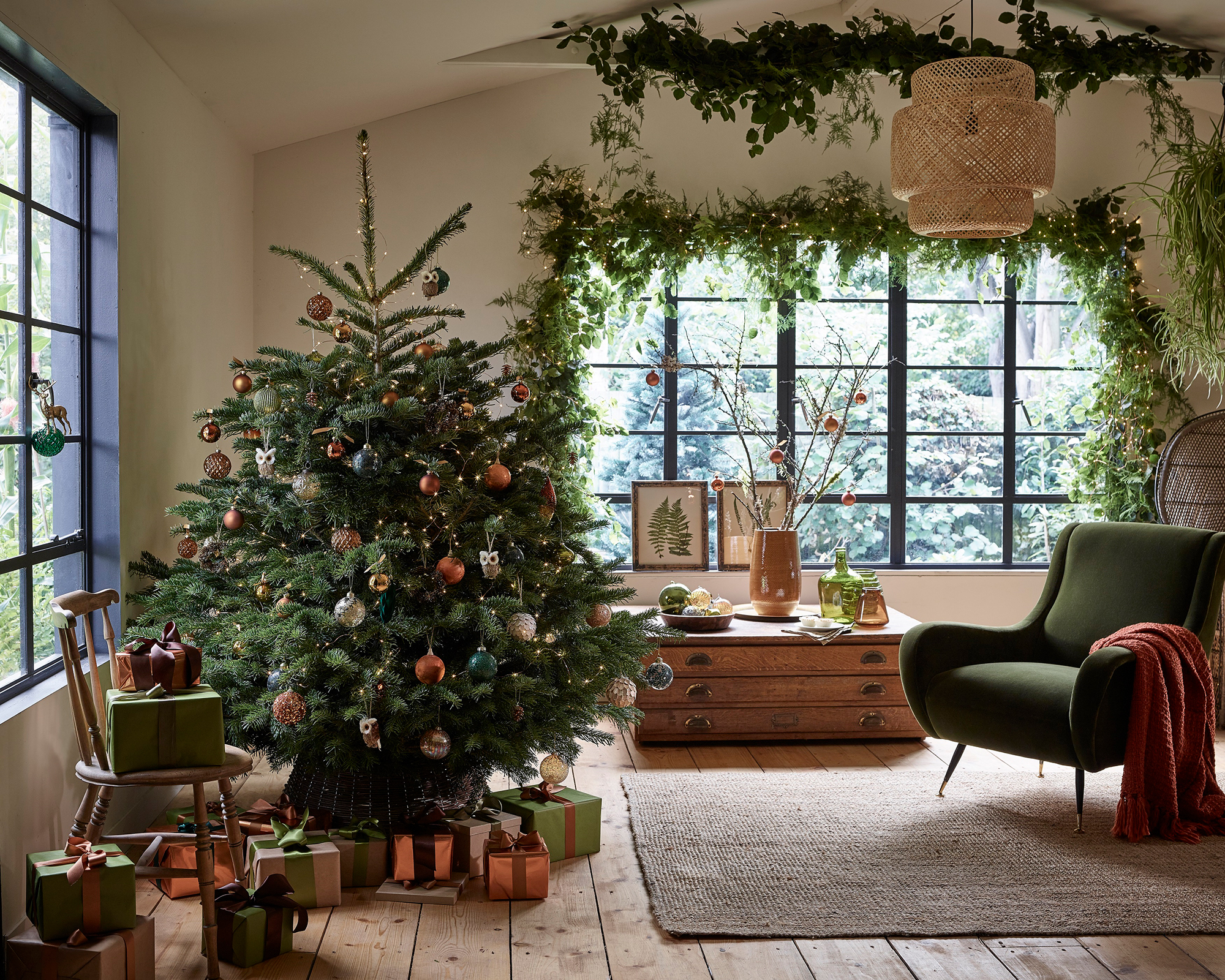
When you get your tree home, the first thing to do is remove the netting around the outside and leave it to stand for 24 hours to allow the branches to settle.
Once it has perked up, if you are planning to put your tree in a water reservoir to help stop it drying out too quickly, saw off 1-2in from the stump.
Then secure it within a sturdy Christmas tree stand, such as this one from Walmart, ideally one with a water reservoir. A Christmas tree skirt or collar will hide this if you would prefer to disguise its appearance.
How should I water my Christmas tree?
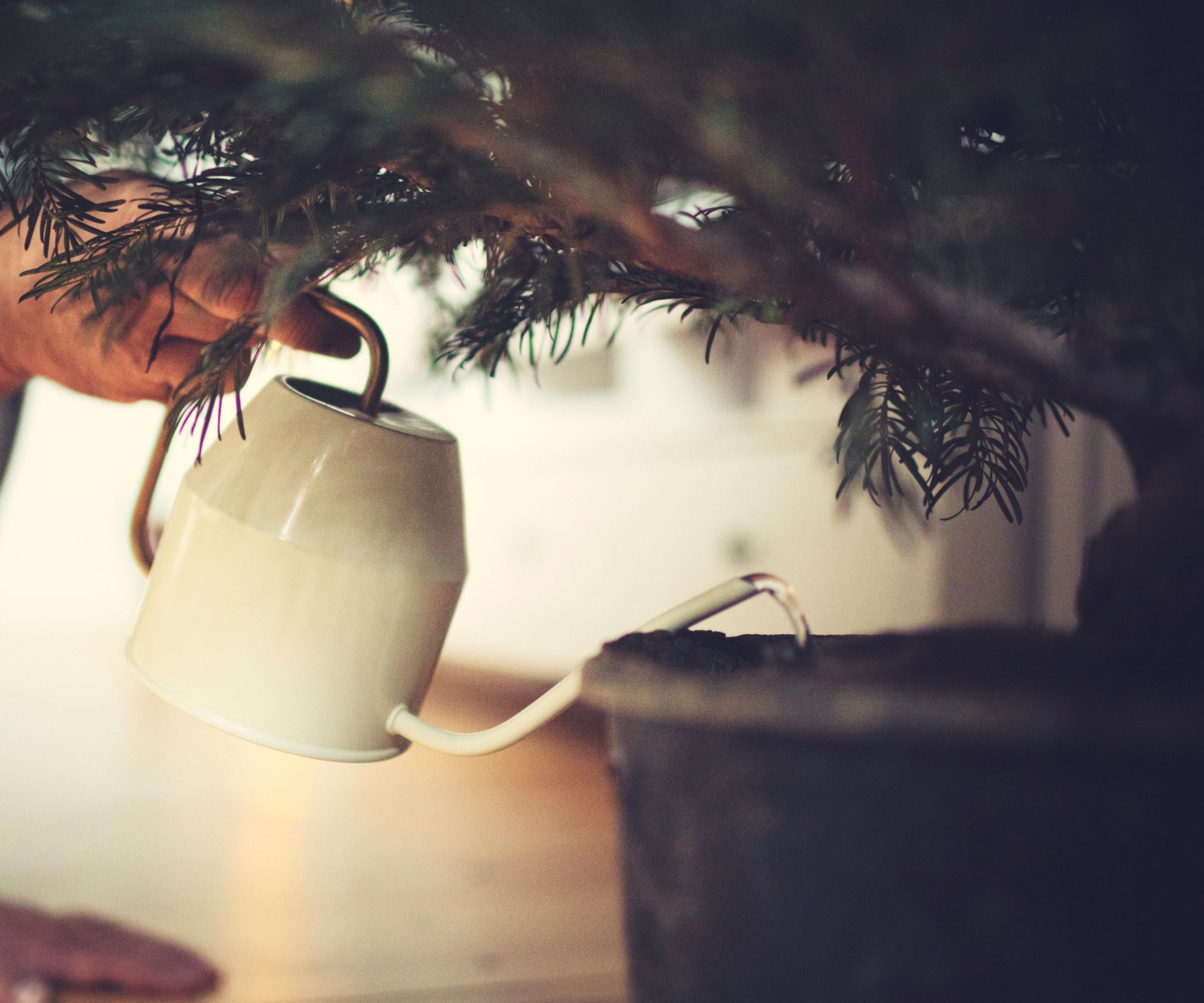
The next step is to ensure your tree gets enough water. If you are placing it in a water reservoir, your tree may require up to 2 litres of water a day, depending on the temperature of the room.
If you can, water your Christmas tree with filtered water or rainwater collected in a water butt or barrel in your yard. Your tree (and houseplants) much prefer rainwater, as tap water contains added minerals which can be harmful to plants.
For pot grown trees being used indoors, keep the compost moist but not wet. With any style of tree, try to avoid putting your tree next to a radiator to protect from central heating and, if possible, keep the room cool when not in use.
How do you stop a Christmas tree drying out?
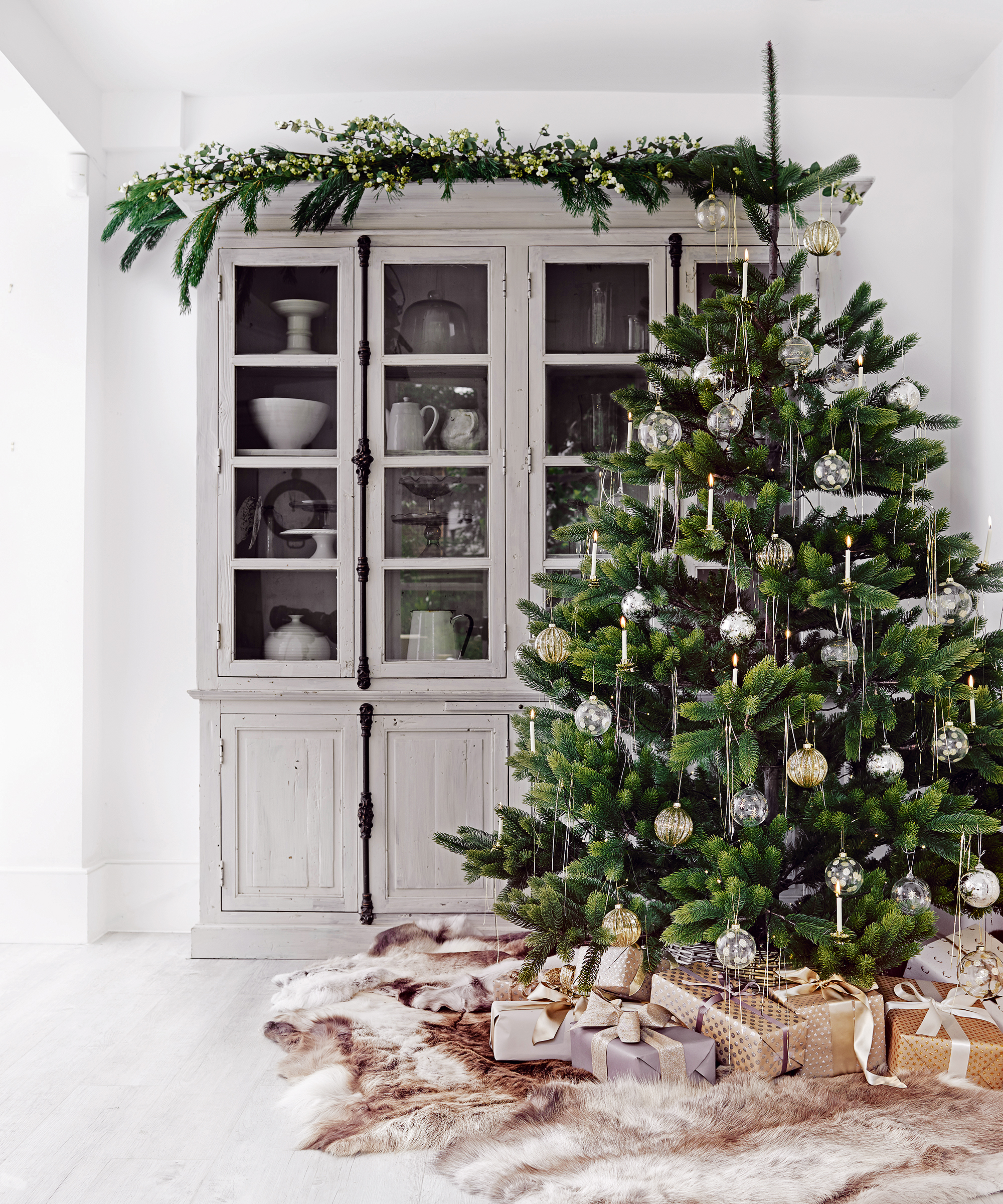
Photography/Michael Sinclair
Ideally, your tree should be nowhere near a radiator (and if it is, it would be a good idea to turn it off) or in a sunny, south-facing windows.
Rachel Bull, head of gardens on Homes & Gardens, says overloading the Christmas tree with lights, which generate heat, will also dry it out faster. 'Smaller, LED lights will give off less heat and slow the drying process.
'I've also had disasters with underfloor heating in the past, which has caused my Christmas tree to droop prematurely,' she adds. 'If you can lower the thermostat, or even survive without putting the underfloor heating on in the room where your tree is, this will really help to keep it looking fresh and healthy.'

Rachel is a gardening writer, flower grower and floral designer. Her journalism career began on Country Living magazine, sparking a love of container gardening and wild planting. After more than a decade writing for and editing a range of consumer, business and special interest titles, Rachel became editor of floral art magazine The Flower Arranger.
How often do Christmas trees need to be watered?
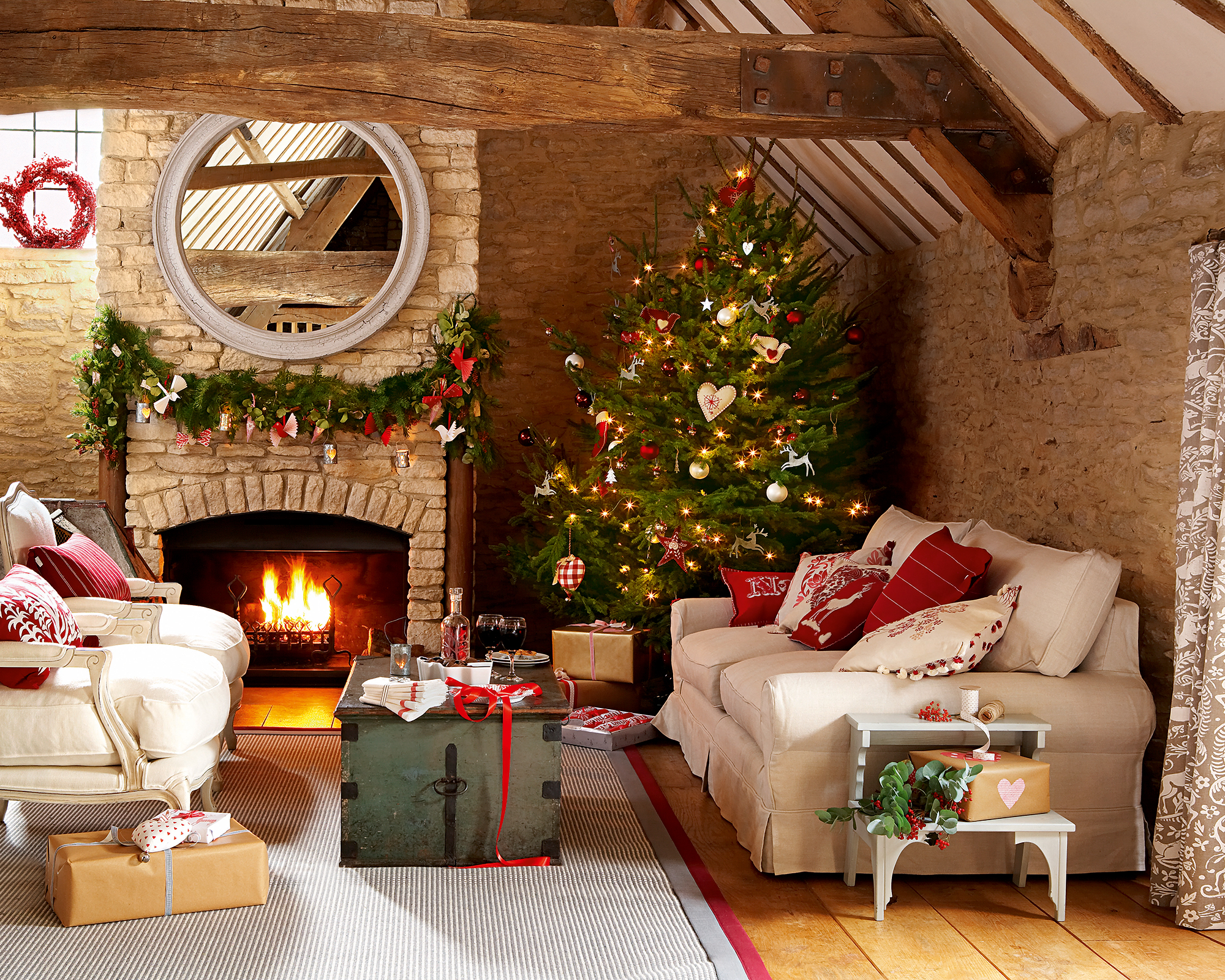
A Christmas tree needs watering every day to stay healthy, especially after you get them home – and for at least 10 days.
For an average tree, use around five quarts of water per day – your tree will be particularly thirsty at first. Keep an eye on the wetness of the soil it's planted in or the water in the stand as time goes on and top up as necessary.
What should I do with my tree after Christmas?
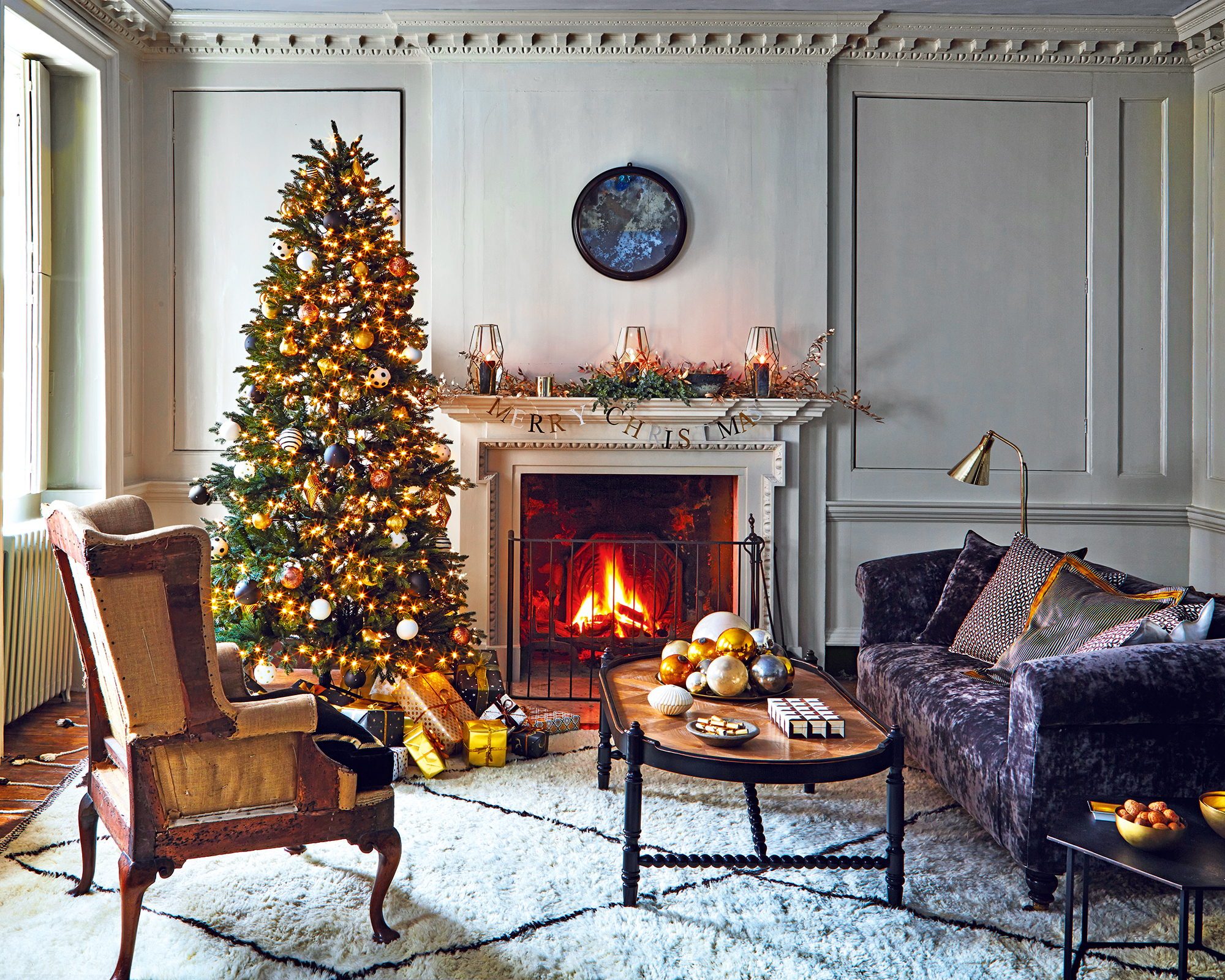
Photography/Jan Baldwin
Once Christmas is over and you're ready to fully begin the new year, it's time to think about taking the tree and Christmas decorations down. Traditionally, one would consider Twelfth Night, on January 5th, the day to remove festive decorations and trees.
When it comes to knowing how to dispose of a Christmas tree, our favorite thing to do with a tree once taken down is to recycle it. Check is there are any doorstop collections in your area. Another eco-friendly option is to use the tree for compost or mulch.
With pot-grown trees, remember these can be planted out in January. Select a spot that has well drained soil, sun, and enough space for the tree to establish. Water and feed your pot-grown tree regularly in its first year. It's worth remembering when planting a pot-grown tree out in the yard that they will grow to be very large, so check you are leaving enough space for it to grow.
FAQs
What is the best type of real Christmas tree to buy?
There are many varieties of Christmas trees to choose from, each with different properties and styles. So, when you go down to your local Christmas tree farm or garden center, be sure to see what different varieties are on offer.
The most popular types that you're likely to come across this Christmas are the Nordmann Fir, the Fraser Fir, and the Norway Spruce.
Where did the Christmas tree tradition come from?
Christmas trees as we now know them are thought to have first become popular in Germany back in the 16th century. However, there is a much longer history of bringing evergreens indoors.
Thousands of years ago, to celebrate the winter solstice, people brought evergreen boughs indoors to remind them of the greenery that would return with warmer months.
In modern times, Prince Albert is credited with popularizing the Christmas tree in 1846 when he brought across the tradition from his German heritage. When a sketch of Queen Victoria, Prince Albert and their children standing around a Christmas tree circulated, this started a trend for Christmas trees in both the UK and the east coast of America, before permeating the rest of the Christian world.
When should I put up my Christmas tree?
While it can be tempting to put your Christmas tree up as soon as playing festive songs is socially acceptable, you should try to wait if you want your tree to last the season.
Christmas trees should survive for at least four weeks if carefully cared for, so the best time to buy is the first or second weekend of December. The busiest day for real Christmas trees falls on the second Saturday in December, which is the 9th this year.
Now you are clued up on the best ways to care for your tree, you can get inspired with our ideas on how to decorate a Christmas tree.
Plus, if you live in a small apartment, you can still get super creative with our expert style advice on how to decorate for the holidays if you don't have space for a tree.
Sign up to the Homes & Gardens newsletter
Design expertise in your inbox – from inspiring decorating ideas and beautiful celebrity homes to practical gardening advice and shopping round-ups.

Thea Babington-Stitt is a Content Editor at Future. She has been an interiors journalist for nearly 10 years and has held positions at LivingEtc, Country Homes & Interiors and Homes & Gardens. Currently, she is writing for Ideal Home and Style At Home's websites and magazines.
-
 'Wick away the ick' – 6 things people with clean laundry rooms always do to make this hardworking space shine
'Wick away the ick' – 6 things people with clean laundry rooms always do to make this hardworking space shineThese tips on how to clean your laundry room will banish grime
By Seraphina Di Mizzurati Published
-
 Jennifer Aniston’s bedroom is a ‘goldmine of simple sumptuousness’ – it’s 2025’s version of quiet luxury and so easy to recreate
Jennifer Aniston’s bedroom is a ‘goldmine of simple sumptuousness’ – it’s 2025’s version of quiet luxury and so easy to recreateThe actress's unique space features James Mont-designed lamps and a raised bed inside a walnut plinth – but you can recreate its understated sophistication
By Megan Slack Published